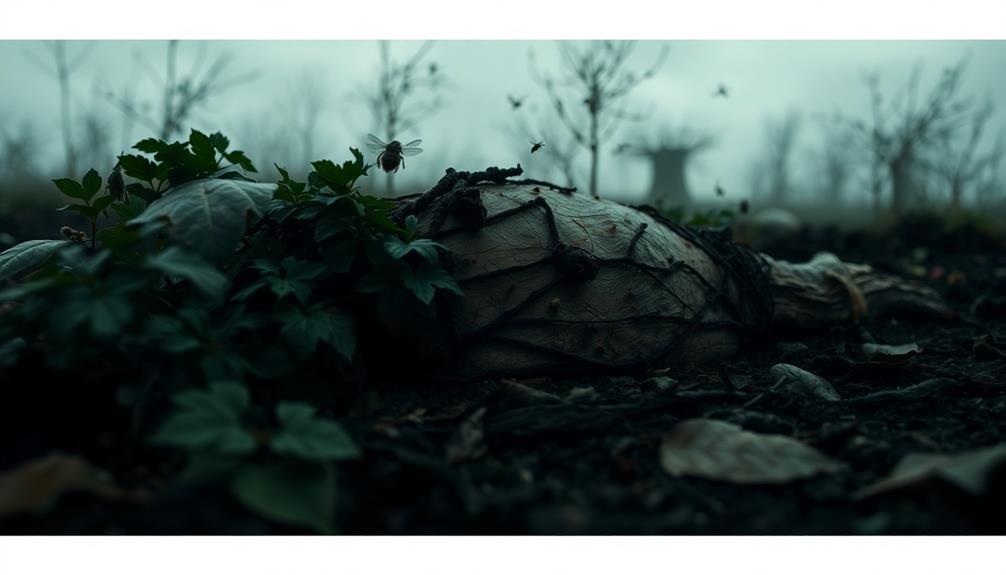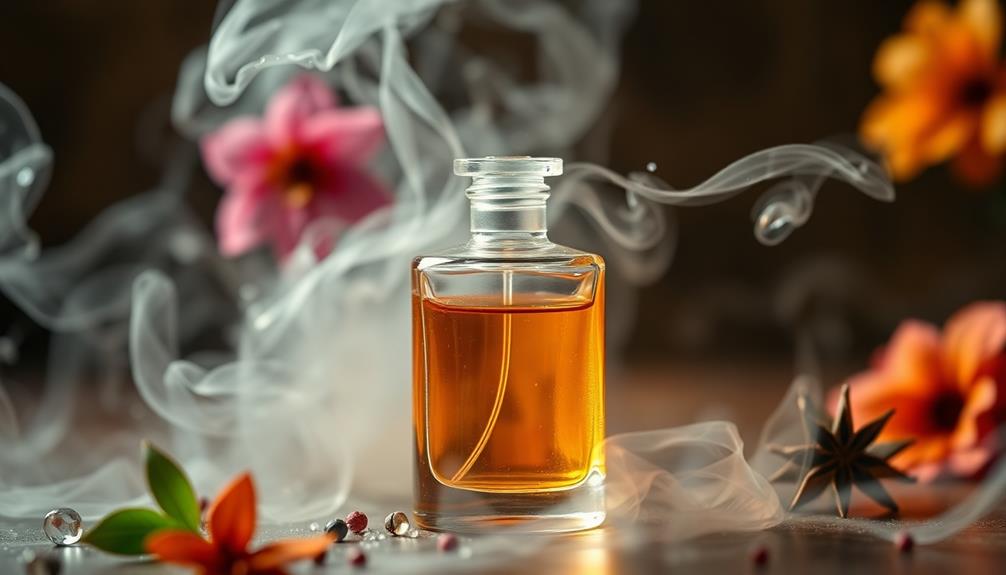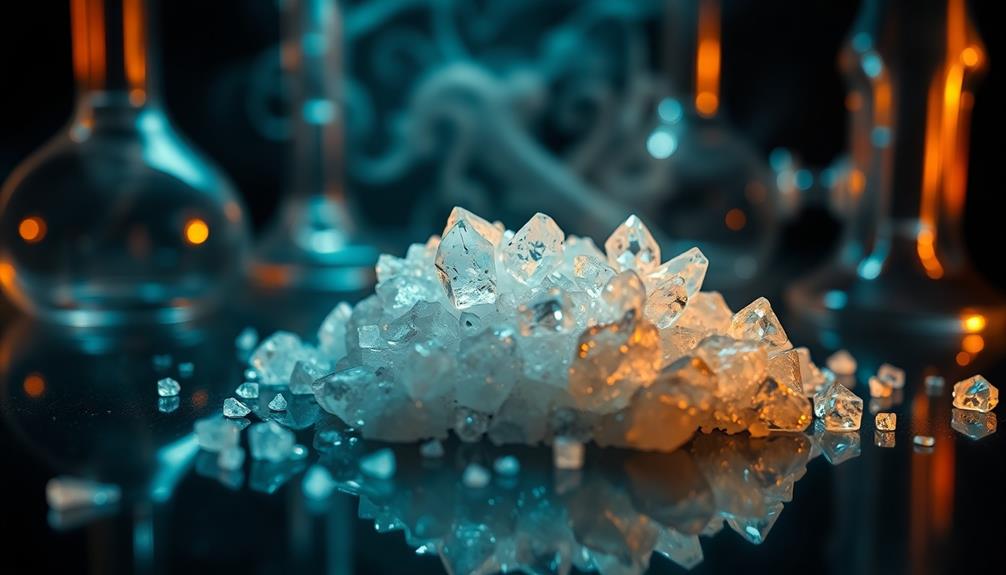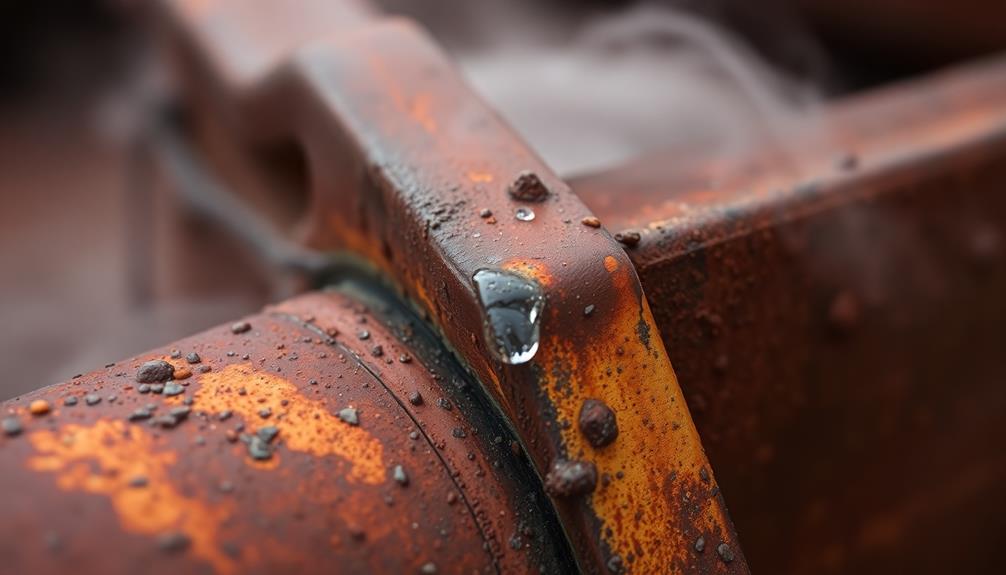A decomposing body creates a very strong and unpleasant smell. This odor includes a mix of rotten meat, garlic, and even hints of feces. Around 72 hours after death, the scent becomes much worse due to compounds like cadaverine and putrescine, which give off a fishy and foul aroma. Factors such as warmth and humidity can make the smell even stronger. In enclosed spaces, the scent can linger, complicating removal. Understanding this smell can help you navigate the topic of decomposition, and there's even more fascinating information ahead that you might find intriguing!
Key Takeaways
- A decomposing body emits a complex mix of odors, including rotting meat, feces, and garlic-like scents.
- Key compounds responsible for the smell are cadaverine and putrescine, which intensify around 72 hours post-mortem.
- Other notable odors include hydrogen sulfide (rotten eggs), skatole (fecal), and indole (mothballs).
- Environmental factors like warmth and humidity significantly enhance the strength and speed of decomposition odors.
- Lingering smells may persist in porous materials, necessitating professional cleaning for effective removal.
Introduction
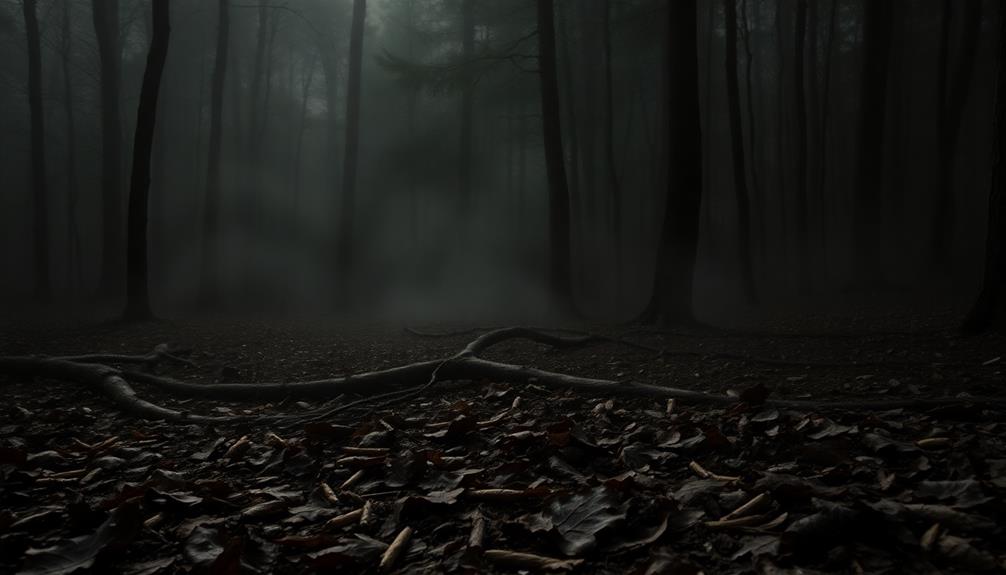
When you encounter the smell of a decomposing body, it's an unmistakable and unsettling experience. The smell of death can hit you suddenly, often overwhelming your senses. This distinct odor arises during the process of decomposition, which is when the body breaks down after death.
As a dead body begins to decompose, it emits a complex mix of odors, including scents that remind you of rotting meat, garlic, and even feces. These odors are mainly caused by bacteria breaking down proteins and releasing gases.
One of the key compounds responsible for the dead body smell is cadaverine, which has a fishy scent, while putrescine adds to the overall unpleasantness. As decomposition progresses, particularly around 72 hours post-mortem, the smell intensifies, especially during the active decay stage.
Environmental factors, like warmth and humidity, can speed up this process and make the odors even stronger. Even after the body is removed, lingering smells can stick around, often needing professional help to completely clear the dead body smell from the area.
Understanding this process can help you grasp the powerful nature of the smell of decomposition.
Description of the Smell
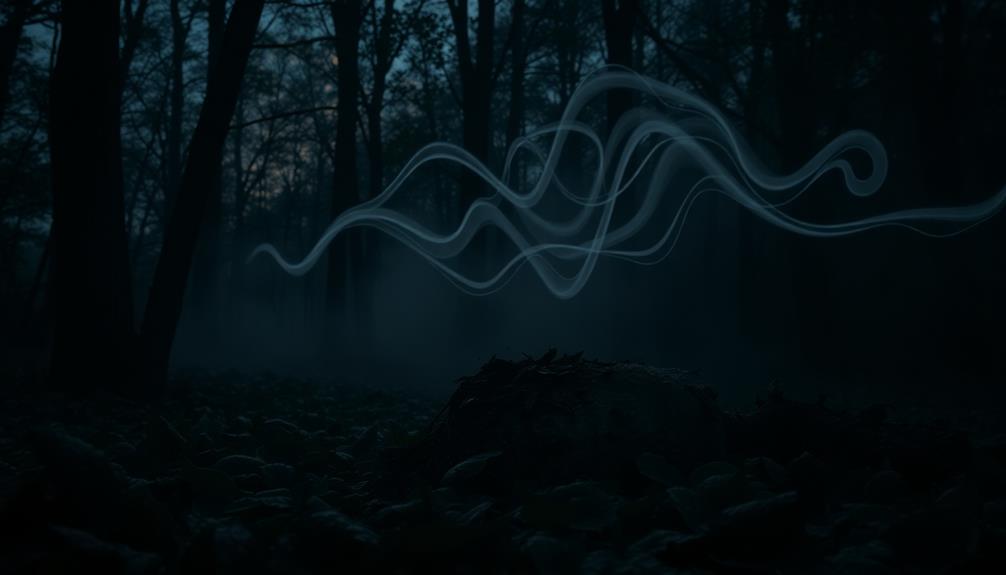
As decomposition continues, the odor evolves. At around 72 hours post-mortem, you may detect additional scents, such as skatole, which has a fecal aroma, and hydrogen sulfide, known for its rotten egg smell.
It doesn't stop there! You could also encounter musty notes from indole, reminiscent of mothballs, along with garlic-like odors from dimethyl disulfide and dimethyl trisulfide.
Environmental factors like temperature and humidity play a huge role in how strong and complex these smells become. When it's hot and humid, the odors can be even more intense, making it difficult to ignore.
Understanding these scents helps you grasp the process of decomposition, even if it's not the most pleasant topic!
Source and Composition
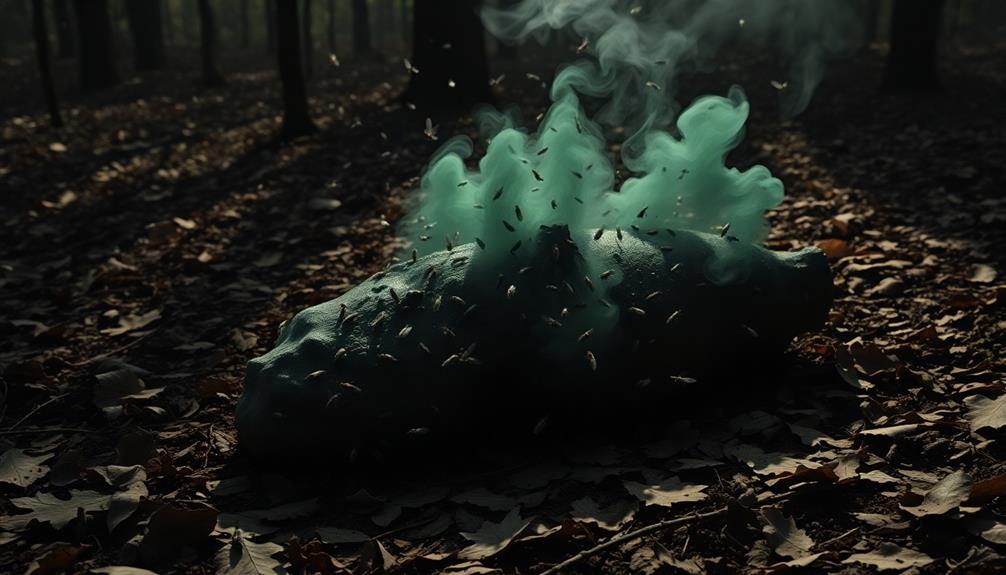
As the decomposition progresses, different chemical compounds emerge. For instance, skatole, which comes from fecal matter, has a strong smell, while indole gives off a scent similar to mothballs.
You might also notice hydrogen sulfide, which smells like rotten eggs.
The type of bacteria present significantly influences the odor, as different strains produce unique scents during this process. Additionally, factors like temperature and humidity can speed up tissue breakdown, making the smells even stronger.
Insects, such as maggots, also play a role in this breakdown, contributing to the unpleasant odors.
Each stage of decomposition brings new smells. For example, during the putrefaction stage, the foul smells become more pronounced, showcasing the complex and varied nature of smells associated with a decomposing body.
Typical Scenarios or Environments
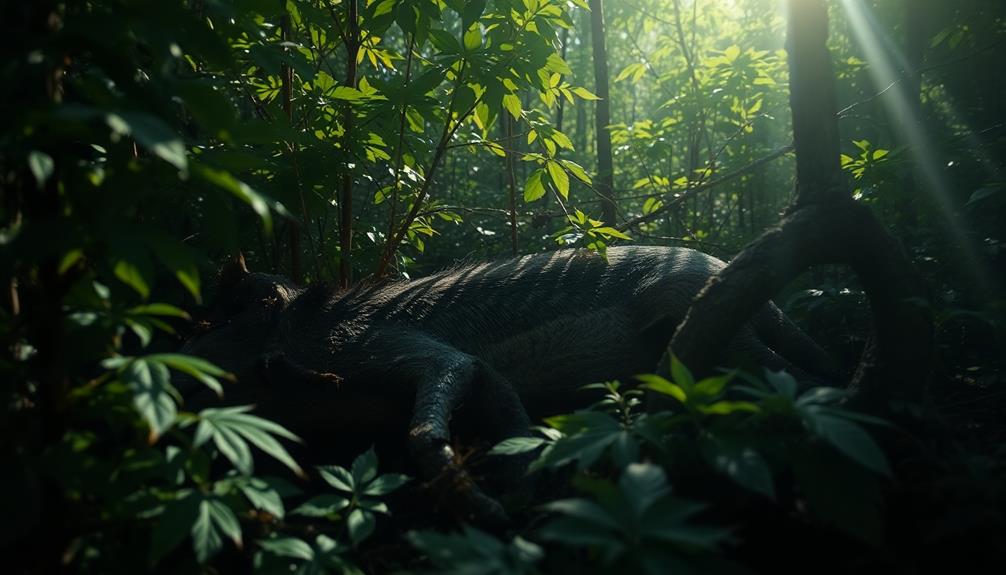
Decomposing bodies can be found in various environments, each affecting the intensity and character of the odors emitted.
In typical indoor settings, the smell of a decomposing body can be quite overwhelming. You might notice strong scents that remind you of rotting meat, feces, or even garlic. This happens due to gases released during the decomposition process, such as cadaverine and putrescine. The odor can vary in intensity depending on factors like temperature, humidity, and ventilation. In some cases, people may mistake the smell of decomposition for other strong odors commonly found in homes, such as the smell of burning dust. The “smell of burning dust explained” typically occurs when heaters or appliances haven’t been used in a while, causing dust accumulation to burn off, but its distinct scent is different from that of a decomposing body.
Outdoors, temperature and humidity play a big role. Warmer, moist conditions can intensify the foul smells and speed up the decomposition process. If a body is in an enclosed space, like an attic or basement, the smell can become trapped and linger long after the body is removed.
Insects also join the decomposition party! The presence of blowflies and maggots can add to the odor profile, as they feast on the decaying matter and release even more unpleasant scents.
Lastly, if your home has carpets or upholstery, these porous materials can absorb the smell, making it tough to eliminate completely without professional help.
Understanding these typical scenarios helps you appreciate just how complex and powerful the smell of a decomposing body can be!
Emotional or Cultural Associations

The scent of a decomposing body often strikes a deep emotional chord, stirring feelings of grief and loss in those who encounter it. For many, the scent of death can bring back memories of loved ones who've passed away, evoking strong emotional responses. This smell isn't just a reminder of what's lost; it can also highlight our own fragility as humans.
Cultural interpretations of the scent of death vary widely. In some cultures, it's seen as a natural part of life, a reminder that everyone eventually faces mortality. Others may view it as terrifying, reflecting their fear of death.
Interestingly, while floral fragrances are often associated with funerals—providing a stark contrast to the earthy scents of decay—these smells can also represent hope and remembrance.
Ultimately, how you respond to the scent of death is deeply personal. It shapes your understanding of loss and influences how you process grief. By recognizing these emotional and cultural associations, you can better appreciate the complex feelings tied to this often-avoided topic.
Health or Safety Considerations
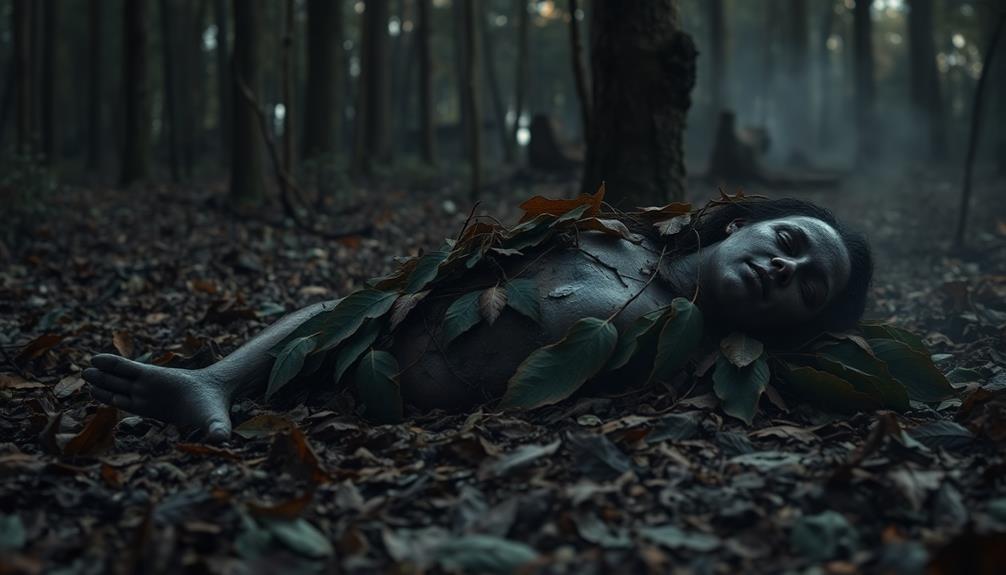
Encountering the scent of a decomposing body can evoke powerful emotions, but it also raises important health and safety concerns. When you smell that odor, which some say resembles rotten cabbage, your body might react instinctively. You could feel symptoms like wheezing, coughing, or throat irritation. It's essential to be aware of these signs.
Decomposition releases harmful compounds that can cause respiratory issues and skin reactions. You might notice watery eyes or even rashes and hives if you're exposed for too long. This is because toxic gases are emitted from the decomposing body, presenting a serious professional biohazard.
To protect your health, it's crucial to wear proper protective equipment. Goggles, gloves, and masks can help minimize the risks during exposure to these hazardous environments. Always keep safety in mind if you find yourself near a decomposing body.
Long-term health effects from these odors are still unclear, so taking precautions is the best choice. Remember, your health is important, so respect the environment and prioritize safety when dealing with such sensitive situations.
Final Thoughts
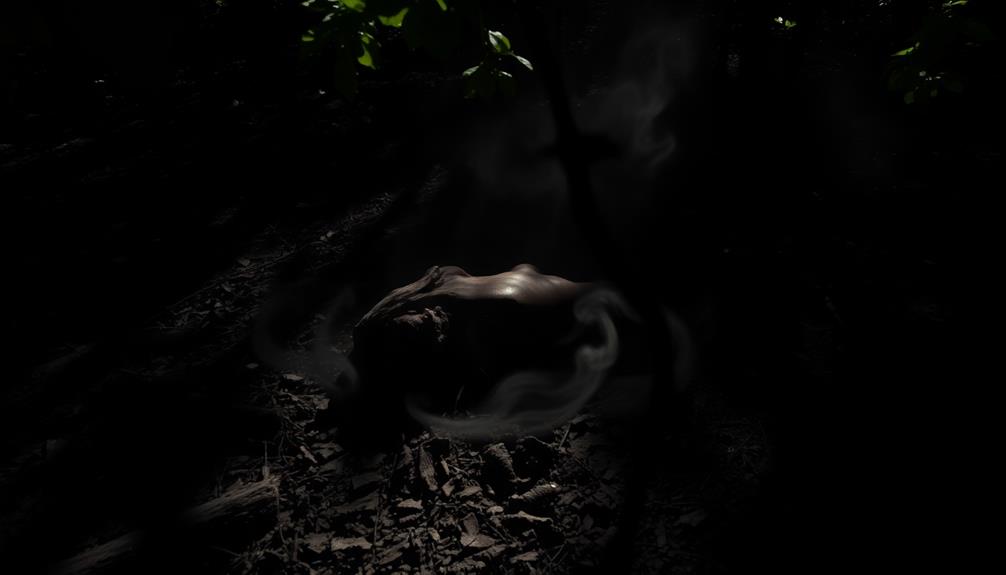
Experiencing the smell of a decomposing body is unsettling and can have profound effects on those who encounter it. This extremely unpleasant odor is caused by organic matter breaking down, releasing gases like cadaverine and putrescine.
As decomposition progresses, especially around 72 hours after death, the smell becomes even stronger. If you've never encountered this scent, it's often compared to rotting fish, which gives you a sense of its intensity.
Environmental conditions and the individual's health before death can change the smell, making it unique to each situation. For example, certain illnesses can produce distinct odors, such as stomach or lung cancer.
Even after a body is removed, the lingering odors can remain in the area, absorbed by porous materials like carpets or walls. You might need professional help to get rid of these stubborn smells.
While it's essential to understand the nature of a decomposing body and its smell, it's also important to approach this topic with sensitivity. Recognizing the emotional weight behind death can help you navigate these challenging experiences with care and compassion.
Frequently Asked Questions
How Bad Does Decomposing Body Smell?
You'd find the smell of decomposition overwhelmingly foul, often likened to rotting meat or spoiled eggs. It intensifies rapidly, becoming unbearable within days, and lingers long after the source is gone, requiring professional cleanup.
What Is the Closest Thing to the Smell of a Dead Body?
You might find that the smell of rotten meat or spoiled fish closely resembles the odor of decay. Certain strong cheeses or overripe fruits can also evoke similar unpleasant scents, making them good comparisons for your senses.
How Far Away Can You Smell a Decomposing Body?
You can smell a decomposing body from several hundred yards away, especially in open air. Factors like wind direction and humidity affect the distance, and the smell intensifies during the early stages of decomposition.
What Does Purge Fluid Smell Like?
Purge fluid smells overwhelmingly putrid, combining the scents of rotting flesh and feces. You'll notice its strong odor intensifying in warm, humid conditions, making it quite difficult to ignore or tolerate.
